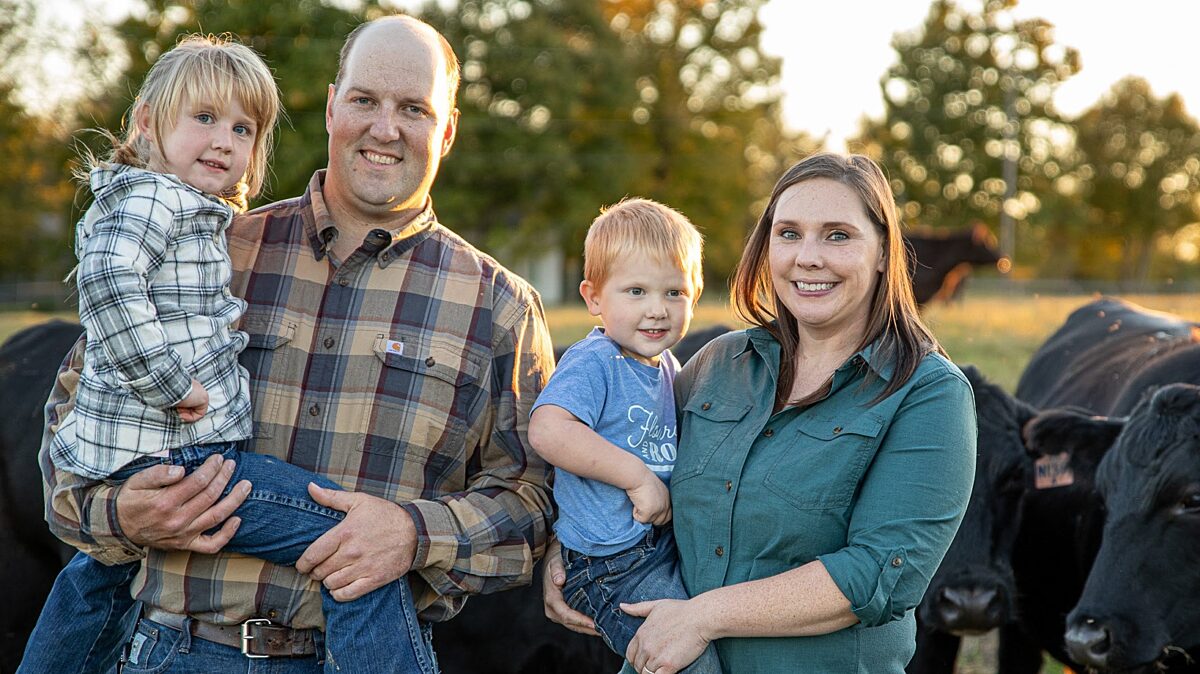American Farms of All Sizes Begin with Family
Zippy Duvall
President

photo credit: Sarah Ison, Used with Permission
Zippy Duvall
President
These days, it seems we’re hearing more and more talk about “big ag.” While the words are tossed out freely, it’s not clear whether the idea is to paint farming as a “big” industry or to slap a corporate label on family farms. In my travels as American Farm Bureau president, I get to meet a lot of farmers and ranchers across this country. I haven’t found “big ag” yet, but what I have found are hardworking men and women who are committed to doing right by their families and yours.
American agriculture is largely driven by families—some who have been farming for generations. According to the most recent USDA Census of Agriculture, 95% of farms in the U.S. are family owned. I’m not sure what other field or industry can claim that, but it’s not surprising to anyone close to agriculture that our businesses are family businesses. And what about those remaining 5%? Most of those are also owned by families—sometimes multiple families—but the tax structure might look different depending on what makes the most sense for the farm business. Some farm families will establish a C-corporation to give them more flexibility as they plan to ensure the farm stays a family business for the next generation. Less than one-tenth of one percent of farms are owned by corporations not held solely by families.
“But what about land ownership?” some might ask. Well, I am glad because that is an important topic for farmers and ranchers with all sizes of businesses. With rising property costs, it can be a challenge for farmers, especially those just starting out, to purchase their own land. Half of agricultural land is farmed by farmers who both own and rent land. There can be a variety of investors who purchase and rent out farmland, but a significant percentage are those who know farming firsthand. According to USDA ERS data, 38% of non-farming landlords are retired farmers themselves.
American agriculture is largely driven by families—some who have been farming for generations.
Farms of all sizes are vitally important to our country. But the fact is, it is getting harder for farms, especially small and mid-sized, to stay in business as pressures beyond the farm gate mount. Our economists at American Farm Bureau have found that farms of all sizes are relying on off-farm income to stay afloat, with only 23% sustained solely by farm income. Not only is it hard to stay in the farm business, it is also difficult for those looking to get into farming. That’s why Farm Bureau advocates for programs and resources to help young and beginning farmers get a successful start in farming. Many of these farmers need to start small given the challenges they face.
With rising supply costs, outdated risk management tools, and an ongoing labor crisis, some farms cannot hang on for a better season. Last year alone, the U.S. lost 15,000 farms—that’s equal to 40 farms a day going out of business. That’s why Farm Bureau is encouraged by this week’s announcement from Secretary Rollins to prioritize efforts that support small farms across the country. We look forward to working with the secretary and her team at USDA to ensure farms of all sizes are economically sustainable.
The American Farm Bureau is proud to represent farms of all sizes, nearly all commodities, and in every region of our great country. We are the largest general farm organization, and that matters deeply for every small family farm in our organization. Every year at the American Farm Bureau Convention, we poll our voting delegates who set our organization’s policies. These men and women come from all corners of agriculture. An overwhelming majority (97%) come from family farms, and nearly two-thirds represent small- to mid-size farms as defined by USDA. Farm Bureau is truly built from the grassroots up, and our large, united voice raises up the voices of farm families who might not be heard on their own.
Our nation’s food security depends on all American farms—large, small, and in between. As our population grows and farmland shrinks, farmers are responsible for feeding more people than ever before. When I step out on my farm in Georgia, I take this responsibility seriously. I think of my family—my children and grandchildren—and I think of families across this country who are counting on family farms like mine. I don’t see “big ag” when I visit farms across this country. What I do see is a big job, a big mission and big hearts in every farm family like mine who works every day to grow the safe and nutritious food all our families rely on.
Top Issues
VIEW ALL